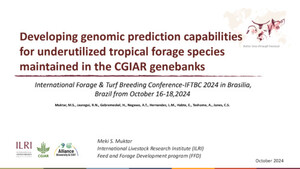
A large-scale metabolomics study to harness chemical diversity and explore biochemical mechanisms in ryegrass
Abstract
Perennial ryegrass (Lolium perenne) is integral to temperate pastoral agriculture, which contributes most of the milk and meat production worldwide. Chemical profiles and diversity of ryegrass offer several opportunities to harness specific traits and elucidate underlying biological mechanisms for forage improvement. We conducted a large-scale metabolomics study of perennial ryegrass comprising 715 genotypes, representing 118 populations from 21 countries. Liquid/gas chromatography–mass spectrometry based targeted and non-targeted techniques were used to analyse fructan oligosaccharides, lipids, fatty acid methyl esters, polar and semi-polar compounds. Fructan diversity across all genotypes was evaluated, high- and low-sugar groups identified, and fructan accumulation mechanisms explored. Metabolites differentiating the two groups were characterised, modules and pathways they represent deduced, and finally, visualisation and interpretation provided in a biological context. We also demonstrate a workflow for large-scale metabolomics studies from raw data through to statistical and pathway analysis. Raw files and metadata are available at the MetaboLights database.
Citation
Subbaraj, A.K., Huege, J., Fraser, K., Cao, M., Rasmussen, S., Faville, M., Harrison, S.J. and Jones, C.S. 2019. A large-scale metabolomics study to harness chemical diversity and explore biochemical mechanisms in ryegrass. Communications Biology 2:87.









